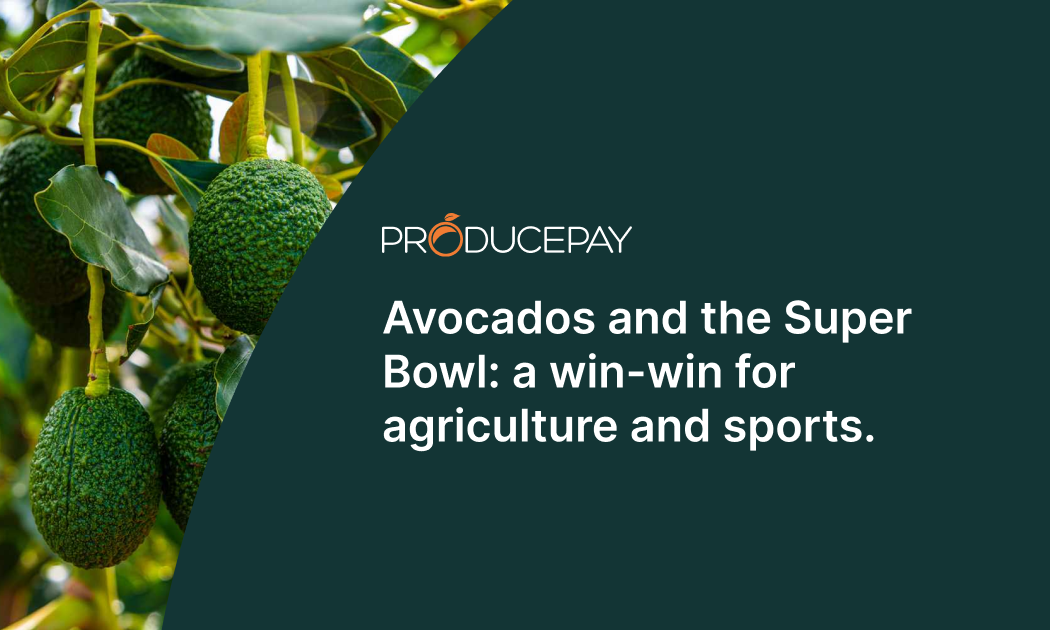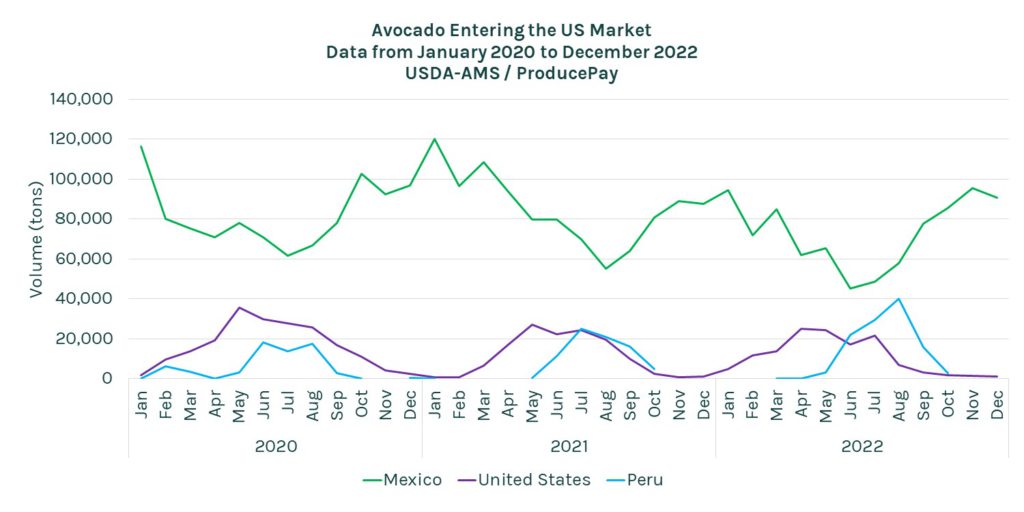
Avocados and the Super Bowl: a win-win for agriculture and sports.
Every year, millions of people in the United States eat avocados while watching the Super Bowl. No big game spread is considered complete without at least one bowl of guacamole next to a bag of tortilla chips.
For growers and marketers of this tropical fruit, the Super Bowl represents an excellent opportunity to do business, which benefits every member of the supply chain including engineers, technicians, day laborers, service providers, etc..
What is the story behind avocado consumption during the Super Bowl?
Avocado consumption in the United States has boomed since the beginning of the 21st century, thanks to the growing affinity for healthy food among young Millennials and Gen-Z.
This has led Mexico and other Latin American countries to increase their avocado exports to meet this worldwide demand, highlighted by the Super Bowl which drives more avocado sales than any other annual event in the world.
This massive demand for avocados during the Super Bowl is a result of the rise of healthier eating habits as well as the exemplary advertising work that Avocados From Mexico carries out year after year.
Importance of Super Bowl for avocado consumption in the United States
In the United States, 20% of annual avocado sales take place during Super Bowls weekend.
This football-driven demand means that in January and the first week of February, United States avocado imports will increase by 30-40%, mainly benefiting the Mexican avocado industry, and the Association of Avocado Exporting Producers and Packers of Mexico (APEAM).
The following graph shows the volume of avocados entering the U.S. market over the last three years. The first thing that stands out is that both domestic production and imported volumes from Peru are minimal in December, January and February, meaning that Mexican avocados have no competitor at that time of the year.

Another interesting point is that the annual peak of Mexican avocado imports takes place in January, since shipments begin to arrive at distribution centers a few weeks before the game, so that retailers can stock up in preparation for consumer demand.
The Super Bowl is always played on the second Sunday of February, which this year will be February 12. Because of this, for almost half of January there will be a large movement of fruit from Mexican orchards to United States supermarkets.
How do avocados arrive to United States consumers?
The logistics chain for fresh avocados destined for the Super Bowl starts in the “Avocado Belt”, which is a region comprising 55 municipalities in the state of Michoacán, however, in 2023 several municipalities in Jalisco will also be joining the exports, after Jalisco became the second Mexican state authorized by the USDA to export avocados.
It is also important to mention that Mexican avocados are imported to the United States year-round, which means that growers know how to comply with the high quality and safety standards required by the USDA.
Additionally, as avocados begin to ripen immediately after being cut, it is necessary to use a cold chain to stop or lengthen this process and keep the harvest fresh in their packages, warehouses, containers and storage facilities until reaching their final destination. On average, it takes 2-3 days for a shipment to arrive from Michoacán to McAllen, Texas, the main entry port for avocado distribution across the United States.
If you sell or buy avocados, ProducePay can help you
Our Marketplace is designed to help buyers and sellers of fresh produce prepare for special trading seasons by offering an easy-to-use platform that simplifies transactions between buyers and sellers.
In addition, we provide specialized tools and resources to help sellers maximize their visibility and attract more interested buyers. We also offer exceptional customer service support, and are prepared to help you with any questions you may have about our platform.
Source: USDA-AMS

